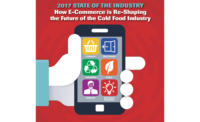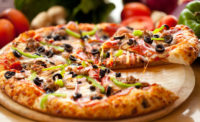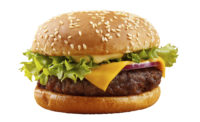Clean labels, transparency, non-GMOs, gluten-free (still, who knew?!), organic, bold flavors and ingredients and portable, sustainable packaging are key buzzwords pertaining to today’s food and beverage industry.
But, it’s Google’s 2016 Food Trends report that paints a more vivid picture of this year’s key food trends.
For example, pasta and pork, foods with a function and bite-sized snacks all compile top searches within the Mountain View, Calif.-based company’s search engine.
“With every query typed into a search bar, we are given a glimpse into user considerations or intentions,” according to the report. “By compiling top searches, we are able to render a strong representation of the United States’ population and gain insight into this population’s behavior.”
The grocery retail landscape
Ordering groceries online and digitizing the store rank among the top trends in grocery shopping for 2016, according to John Karolefski, veteran supermarket watcher and purveyor of GroceryStories.com.
“The top trends for 2016 indicate that traditional shopping patterns are changing,” he adds. “Look for grocers to get creative and enliven what has been a mundane chore.”
Top trends include online shopping, digitizing the supermarket, enhanced in-store dining and providing in-store entertainment such as more product sampling, nutritional tours and cooking demos.
Mobile apps make a play
In response to more and more consumers shopping online comes an influx of mobile apps, where food processors partner with mobile app providers to allow participating retailers to maximize savings, increase convenience and unlock exclusive information.
For example, Kraft Heinz, Pittsburgh, Pa., formed a 7-year partnership with Fetch Rewards, Madison, Wis., to extend its reach to an ever-increasing base of mobile shoppers. Fetch shoppers scan all of the items as they shop using the camera on their mobile device. With each scan, shoppers earn Fetch Points, which are redeemable for free items at checkout, and gain access to Fetch coupons, which are applied instantly. Fetch also provides shoppers their running total, access to past receipts and the ability to create and maintain digital shopping lists.
The Kroger Co., Cincinnati, purchased YOU Technology Brand Services, Inc., a digital coupon provider based in Brisbane, Calif., to create a measurable way for retailers and brands to drive consumer purchase decisions online, in-store and on-the-go.
Despite the ways the economy has managed to recover since the recession, consumers are still taking a practical and cost-conscious approach to buying, according to Retale, a location-based mobile advertising platform for retailers and brands. Results from its first annual “Retale Millennial Grocery Report” examined grocery shopping preferences among Millennials.
When asked to choose the three most likely factors in picking a grocery store, the top response was “lower costs or opportunities to save” (50%), according to the survey. “Availability of locally-grown or organic products” (38%) was the runner-up, followed by “store is close to my house or workplace” (34%); “technology that makes research and shopping easier” (31%); and “I shop based on specific recipes I’m interested in making” (28%).
DMI, an end-to-end mobility company based in Bethesda, Md., partnered with the U.S. Department of Agriculture (USDA), Washington, D.C., to incorporate enhancements and customer feedback into The FoodKeeper, a premier mobile app developed by DMI for the USDA Food Safety and Inspection Service (FSIS).
Furthermore, RetailMeNot, Inc., Austin, Texas, released a new study titled “The Evolution of Dining in the Digital Age,” which explores digital savings and mobile habits among restaurant patrons, as well as general habits related to spending and dining out. More than ever before, consumers are turning to their digital devices to help make dining out decisions easier, including searching for nearby locations and deals. In fact, nearly a third of consumers (32%) have used a deal that they found online or on their mobile device at a restaurant in the past three months.
From a food processing standpoint, Ajinomoto Windsor, Ontario, Calif., developed the Food Cost Calculator, designed to help restaurant operators calculate food costs and other key profit-building functions.
And, Kellogg Co., the Battle Creek, Mich.-based owner of the MorningStar Farms brand, created the Veg Effect Calculator, an innovative tool to help consumers see the impact a veggie meal can create on the environment.
The impact of meal kit delivery services
Meal kit delivery services have exploded over the past few years because they offer consumers a convenient way to cook at home without having to do the meal planning and grocery shopping, according to “Meal Kit Delivery Services in the U.S.,” a new report from Packaged Facts, Rockville, Md.
Packaged Facts conjectures that the U.S. meal kit delivery services market will generate approximately $1.5 billion in sales in 2016, and will grow to a multi-billion market over the next five years.
However, the growing presence of meal kit delivery services comes with a caveat for various other segments of the food and beverage industry. For example, meal kit delivery services have the potential to disrupt both the restaurant and the grocery industry because they allow people to cook restaurant-quality meals at home without stepping foot in a restaurant or grocery store.
Likewise, Peapod.com, a Chicago-based online grocer, announced the availability of three new meal kits made in partnership with ConAgra Foods, Inc., Omaha, Neb., and Campbell Soup Co., Camden, N.J. The new kits each contain pre-measured, pre-cut and pre-washed ingredients for mealtime solutions delivered straight to customers’ doors.
It’s all in the packaging
Demographic changes are leading to changes in household dynamics and eating behaviors, such as multi-shopper households, more meals being eaten alone and frequent snacking on more occasions, according to “Food and Beverage Packaging Innovation in the U.S.: Consumer Perspectives,” a report published by Packaged Facts.
Five key trends shaping food and beverage packaging include targeting Millennials, making available smaller packages (for single-serve or 2-person households), packaging for convenience, introduction of see-through packaging and growth in eco-friendly packaging.
How media influences consumer purchasing trends
2016 is a big decision-making year for Americans, according to Kimberly Reed, president of the International Food Information Council (IFIC) Foundation, Washington, D.C.
“Not only do we have an upcoming presidential election involving more conversations with new voters, emerging technologies and changing demographics, [but] we also see more factors influencing Americans’ food decisions,” she adds.
This was realized in IFIC’s 2016 Food and Health Survey titled, “Food Decision 2016: The Impact of a Growing National Food Dialogue.” The survey asked whether Americans’ opinions had changed about a number of dietary components. In most cases, media headlines and articles were at or near the top of the sources that altered consumers’ opinions.
And, regardless of where Americans might actually be getting their information, the most trusted sources for information about what types of food to eat were registered dietitian/nutritionists (RDNs) at 70%, “your personal healthcare professional” (65%) and U.S. government agencies (37%). The same three groups topped the list of trusted sources for information about food safety, with RDNs trusted by 70%, followed by a personal healthcare professional (57%) and U.S. government agencies (52%). The 52% who trust the U.S. government for food safety information is a sharp increase over the 42% who gave the same response in 2015.
“Our 11th annual survey shows that the food dialogue has gained momentum over the past year, with factors [such as] health status, gender, income, education and age influencing Americans’ views on the food they eat,” says Reed.
Why Millennials—and Baby Boomers—matter
Millennials comprise of the fastest-growing segment of the U.S. population and the most diverse segment in U.S. history, according to Information Resources Inc. (IRI), Chicago. They’re tech savvy, social media driven and crave innovation. They want bold flavors, transparent ingredient labels and convenient packaging. They have more college degrees than any generation and represent 25% of the workforce, yet they demand flexible working hours, relaxed attire and company perks.
And, Millennials get what they want, when they want it and how they want it.
So, why does the food and beverage industry allow today’s youth to dictate its future?
That’s because Millennials possess a buying power that will surpass trillions of dollars in the near future, says IRI.
Millennials are food-obsessed, self-described foodies who blog about food, post pictures of food, talk about food on social media and are more likely to try new foods vs. any other generation to date.
Furthermore, Millennial dads are spending the overall most time in the grocery aisles, according to a study produced by Ibotta, a Denver, Colo.-based mobile shopping app. This study, which analyzed the shopping behavior of more than 90,000 dads since 2013, revealed that Millennial dads are increasing the number of grocery purchases by 62% since 2013, while the younger fathers in this age group (ages 18-24) are purchasing 25% more groceries than dads in older generations.
On the other hand, Baby Boomers are also extremely important to the marketplace, says IRI, and will remain so, with their consumer packaged goods (CPG) spending still expected to reach over $200 billion in 2020.
In fact, Packaged Facts found that members of the Boomer generation also represent a key market segment for food retailers and restaurants.
For example, foodies in the Boomer generation are about as likely as their Millennial counterparts to only snack on healthy foods, look for organic or natural foods when grocery shopping, only look for the freshest ingredients when they cook, view their kitchen as the most important room in their home and really enjoy cooking, says Packaged Facts.
So, are all of these changes really working?
Big players in the food and beverage industry are trying to do the right thing. However, according to Deloitte LLP, Chicago, its annual survey of more than 354 brands across 34 product categories reveals many of America’s national food and beverage household brands continue to struggle for the hearts and minds of consumers for the fifth year in a row.
In fact, nearly three in four (73%) of CPG categories show an overall decline in their brands’ “must-have” status—a consumer purchase regardless of price. This year’s study also reveals a drop in store brands’ appeal, improved consumer perceptions of the economy and shoppers’ willingness to pay a premium for attributes such as health and convenience.
“This is a critical moment for consumer product companies,” says Barb Renner, vice chairman, Deloitte. “While the majority of consumers say they are committed to sustained frugality year after year, our findings point to early signs that they may finally be responding to a belated but increasingly strong economic recovery. It creates tremendous opportunities and risks for companies in this sector, given households’ lack of commitment to national brands brought on by years of stretching dollars to the limit. Brands that get things right can use the economy’s momentum to regain their place on consumers’ shelves, but those that move too slowly could very well be left behind.”
Here is this year's State of the Industry report:
2016 Best New Products Contest
Congratulations to the processors who placed in the Top 5 of this year's Best New Products Contest.
2016 State of the Industry: Frozen meals are fastest growing frozen foods category
Frozen microwavable foods represent the largest and fastest growing microwavable foods product segment, according to a study produced by Persistence Market Research.
2016 State of the Industry: Snacks & apps take over menus & at-home freezers
Although an average of 85% of restaurants, fine dining and quick-service restaurants offer appetizers on their menus, nearly 35% of consumers eat appetizers at home, according to a report produced by Datassential.
2016 State of the Industry: How meat & meat alternatives successfully co-exist
The meat department is one of the most important categories for many food retailers.
2016 State of the Industry: Thaw-and-serve is key to growing retail baked goods sector
Frozen bakery products help in-store bakeries, coffee chains, gas stations and quick-service restaurants offer fast and convenient products with prolonged shelf life despite seasonal variations.
2016 State of the Industry: The transformation of dairy packaging
The global market for dairy packaging will grow moderately during the forecast period and will post a steady CAGR of over 4% by 2020, according to a study produced by Technavio.
2016 State of the Industry: How innovation in freezing technologies provide growth opportunities in fruits, vegetables
Technology developments in post-harvest handling, storage and transportation make frozen produce superior to fresh picked vegetables and fruits, in terms of quality and nutrition, according to a report published by Global Industry Analysts.
2016 State of the Industry: Breakfast evolves to all-day occasion
From the most important meal of the day to an all-day daypart, the cold breakfast category continues to evolve.
2016 State of the Industry: Dips & spreads bring innovation, flavor & portability to the party
Whichever way consumers dip and spread, this growing category continues to bring innovation, flavor and portability to every party.
2016 State of the Industry: The future of cold beverages is functional
Advanced technologies help HPP processors accelerate new product developments while still achieving high levels of food safety.
2016 State of the Industry: Today’s desserts consist of nostalgic flavors, portable packaging
From playful flavors to alcohol-infused varieties to handheld options, today’s frozen desserts, novelties and pies bring a lot to the party.




